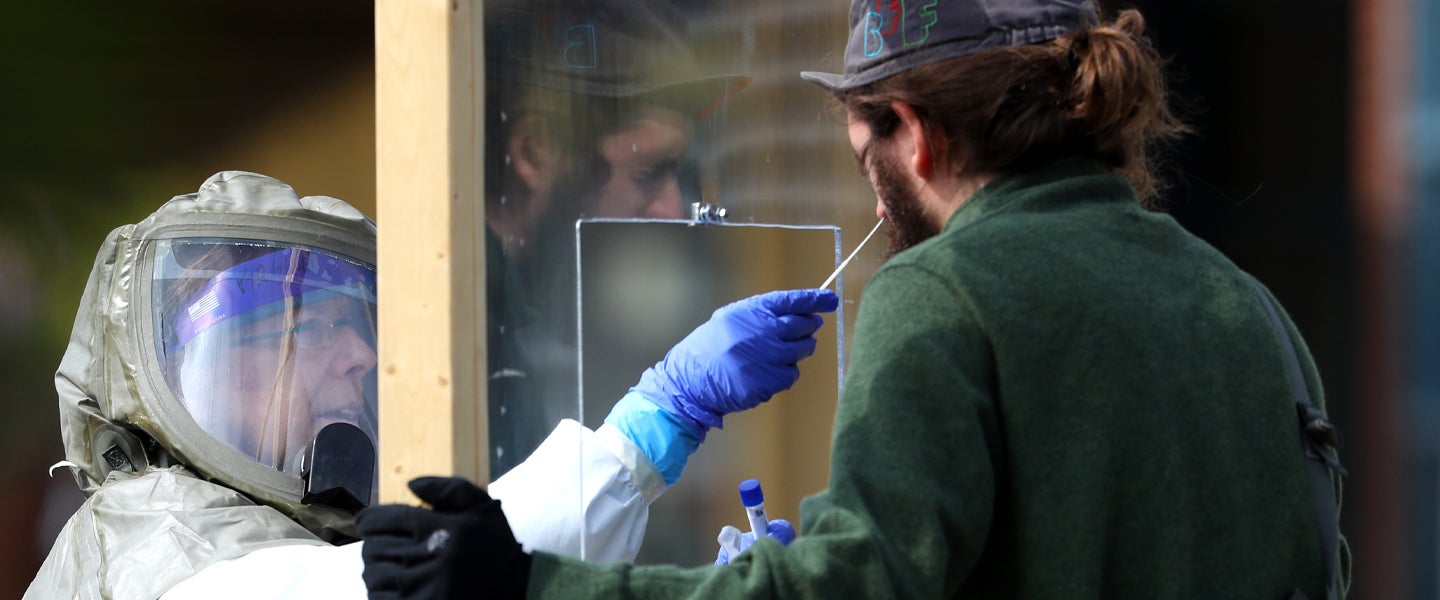Despite the fact that the number of daily COVID-19 new cases and deaths has remained steady, the country is re-opening. I went for a walk in L.A. yesterday, and saw people sitting in restaurants. Remember that?
Considering that there’s neither a vaccine nor a cure, I don’t feel ready for it. The only real improvement most areas have made is in their testing capacity. I could go get tested here in L.A. almost any day, for free. The thing is, now that society is slowly going back to normal and this is our only real medical form of prevention, how often should I get tested?
The answer is going to depend a lot upon our activities. The Centers for Disease Control and Prevention recently made an update to the coronavirus-related guidance on community exposure, and their recommended precautions now specify that you may need to self-quarantine and be tested for the virus if you have been within six feet of someone with the virus or symptoms for more than 15 minutes (emphasis obviously mine).
The CDC website specifies that, regarding the 15-minute rule, “Data are insufficient to precisely define the duration of time that constitutes a prolonged exposure. Recommendations vary on the length of time of exposure, but 15 minutes of close exposure can be used as an operational definition.”
They clarify, though, that you may still get sick from a quicker interaction. “Brief interactions are less likely to result in transmission; however, symptoms and the type of interaction (e.g., did the infected person cough directly into the face of the exposed individual) remain important,” the website reads.
Any occasion where you’ve spent more than 15 minutes with someone experiencing symptoms or someone already diagnosed would be a logical time to get tested. What’s tricky, though, is that someone can potentially spread the virus two days before displaying symptoms, and experts are still unclear about whether asymptomatic carriers exist. But, ideally, you’re limiting the amount of people you have longer-than-15-minute interactions with.
And while the 15-minute guidance isn’t a hard-and-fast rule — as well as not any sort of pass to return to life as it was before — it at least provides some comfort to people like myself who have been anxious about even passing by someone closely at the grocery store. We should all still be social distancing, and if we have to cease our social distancing for worthwhile causes like protesting, we should return to self-quarantine afterwards and get tested when we can.
In areas where tests are widely available, priority is still given to people who are experiencing symptoms, or people who may not have any symptoms but are in a high-risk category or work essential jobs. If you’ve had prolonged exposure to someone and are concerned despite not having symptoms, it’s not a bad idea to get tested when a spot is available, if just for peace of mind.
That said, you shouldn’t use tests as your means of prevention. You wouldn’t use a pregnancy test as contraception — consider treating coronavirus prevention the same way.

